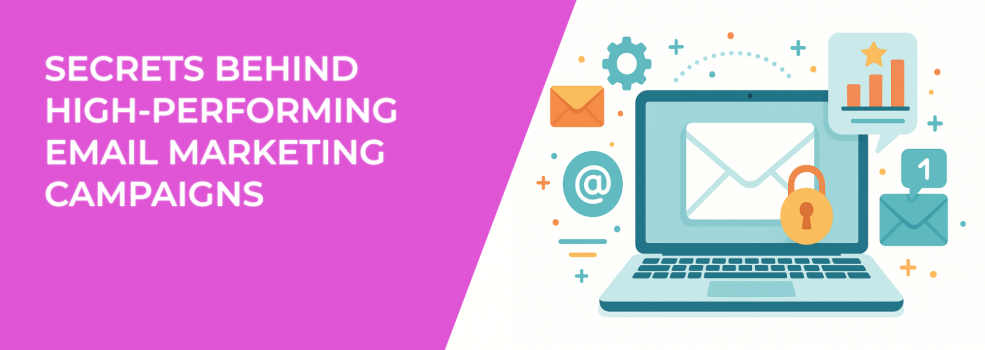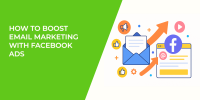Think email marketing is old-school? Think again.
Despite endless predictions about its downfall, email continues to outperform flashier channels. Why? Because when it’s done right, it delivers results — real ones: higher engagement, increased conversions, and serious ROI.
But what separates the emails that get opened, read, and clicked from the ones buried in spam folders or ignored in crowded inboxes?
Here’s what high-performing email marketing campaigns are really built on.
1. They Start With Segmentation — Always
Mass emails are dead.
The best campaigns don’t treat every subscriber the same. Instead, they group contacts based on meaningful criteria:
-
Purchase history,
-
Behavior on-site,
-
Email engagement level,
-
Industry or job role.
This makes it possible to send messages that feel like they were written for just one person. And when emails feel relevant, people actually read them.
Example: let’s say you sell digital marketing tools. Someone who’s clicked on your SEO case studies should get very different emails than someone interested in paid media. Obvious, right? Yet many brands still send blanket emails to everyone.
Why waste your shot?
The best campaigns don’t treat every subscriber the same — just like successful Facebook ad targeting relies on clear audience segmentation.
2. The Subject Line Pulls Its Weight
People don’t read emails — they scan subject lines.
That’s your headline. Your make-or-break moment. If it doesn’t spark curiosity or clearly communicate value, your email won't even be opened.
Tips for writing subject lines that perform:
-
Keep it under 50 characters,
-
Use action-oriented language,
-
Avoid spammy words like “free,” “guaranteed,” or “earn fast”,
-
Test emojis — but don’t overdo it.
Curious? Try A/B testing subject lines with small segments of your list. See what wins. Then roll out the best one to the full group. You'll be surprised how small changes lead to huge lift.
3. Timing and Frequency Matter More Than You Think
When you send is just as important as what you send.
Too often, brands guess. Or worse — they blast emails at the same time every week because “that’s what we’ve always done.”
But audiences have habits. Patterns. Preferences.
Track engagement metrics over time. Look at what days, times, and frequencies perform best. Then adjust your cadence.
For instance:
-
B2B audiences might open more emails mid-week, during working hours,
-
B2C customers often engage at night or on weekends,
-
Too many emails can trigger unsubscribes — but too few and they’ll forget you.
The sweet spot is different for everyone. Find yours.
4. High-Performing Emails Are Always Mobile-First
Over 60% of email opens now happen on mobile. If your email isn’t optimized for small screens, it won’t get read — simple as that.
What does mobile-first design actually mean?
-
Short paragraphs (1–2 sentences max),
-
Clear CTA buttons with plenty of spacing,
-
Fonts that are readable on smaller screens,
-
Images that load quickly and scale well.
And always, always preview on mobile before sending. One bad experience can cost you a loyal subscriber.
5. They Use Personalization Beyond the First Name
“Hi [First Name]” isn’t enough.
Modern personalization goes deeper. Smart campaigns reference past purchases, suggest relevant products, or dynamically adjust content based on user behavior.
Hypothetical example: a SaaS company could send onboarding emails that adjust based on the features a user clicked in their first session. Someone exploring analytics tools gets guidance on tracking KPIs. Someone setting up email workflows gets content tailored to automation. Same product — totally different experience.
This level of personalization feels helpful, not creepy. Done right, it builds trust and drives conversions.
6. Every Email Has One Clear Goal
Trying to do too much? That’s where most email campaigns fail.
Each email should have one — and only one — goal:
-
Get the reader to click,
-
Download a resource,
-
Sign up for a demo,
-
Buy a product.
Multiple CTAs dilute your message. They confuse your audience. And confusion doesn’t convert.
Want to drive more than one action? Great. Use a series instead of stuffing it all into one email.
7. Analytics and Iteration Win the Long Game
The best email marketers don’t guess. They measure everything:
-
Open rates,
-
Click-through rates,
-
Bounce rates,
-
Conversion rates.
Then they iterate. Again and again.
It’s not about chasing perfection — it’s about making small, strategic improvements that stack up over time.
Maybe it’s shortening your emails. Or changing the CTA color. Or dropping links that aren’t pulling their weight.
The key? Stay curious. High-performing campaigns don’t sit still — they evolve.
Final Thoughts
Email marketing isn’t magic. It’s methodical.
But when you follow the right steps — segment smartly, write compelling copy, send at the right time, and personalize with intent — email becomes a powerhouse. A quiet, consistent driver of sales, engagement, and growth.
So before you write another email, ask yourself: would you open it? Would you click?
If not, go back. Rethink. Rewrite. Your audience deserves better. And so do your results.
And if you're ready to go further, use Facebook Lead Ads to grow your email list faster and boost cross-channel performance.

